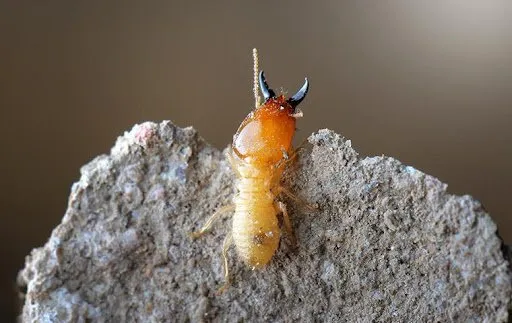Request a Quote
Termites are wood-eating insects, feeding on the cellulose that is in wood and other plants. They have unique protozoa in their guts that allow them to turn cellulose into a digestible material. Subterranean termites are the most widespread type of termite living across the country. Each year, subterranean termites are responsible for causing more than five billion dollars in damages. These termites are social, and live underground in large colonies near areas of moisture. Termites divide the members of their colony into castes (workers, soldiers, and reproductives). Each caste has a job within the colony. Worker termites are the most numerous members of the colony and are responsible for gathering food. Workers termites invade our homes and are responsible for the structural damage termites are famous for. Formosan termites are a species of subterranean termite common to our area. These termites are aggressive feeders, and their large colony size allows them to cause extensive damage in a shorter time than other species of termites.

Termites pose a significant danger to our properties. Their ability to cause structural damage is virtually unparalleled. Dangers and problems associated with termites include the following:
Termites become a problem for homeowners when workers find their way into your home while foraging for food. Termites move through the soil or through mud tubes they create. Mud tubes allow termites to move above the ground and along building foundations while staying out of the way of predators and maintaining their moisture needs. Most termites enter into structures at ground level, through the foundation or wood that’s making contact with the ground. Formosan termites are unique because they can enter above the ground, usually through the roof.
As their name suggests, subterranean termites nest under the ground. Formosan termites are also able to nest above the ground in carton nests. Carton nests allow Formosan termites to nest above the ground, while still maintaining their moisture requirements, and they often place their carton nests on flat roofs.
Indoors, termites typically move behind walls and under floors to feed. People rarely see worker termites since they spend most of their lives under the ground or inside the wood they are feeding on. Reproductive termites are the caste that is most likely to be seen by people. Reproductive termites swarm from their colony, usually in the spring, to find a mate and build a new colony. Seeing a termite swarm is an indicator that a termite colony is near, and you should seek help from a professional to perform a termite inspection on your property.
The task of eliminating termites from your Tennessee property should be left to a professional. At Colonial Pest Control, we have 50 years of combined pest control experience. We know pests and how to eliminate them from properties once and for all!
We guarantee our results and take pride in treating our customers like family. We are a local company dedicated to using only the most efficient, cutting-edge services possible. If you are looking for exceptional pest solutions for your Knoxville area home or business, contact the pest professionals here at Colonial Pest Control today!
In addition to our professional termite control services, take the time necessary to implement these easy-to-execute prevention tips:
Quick & Reliable
We are available 24/7 via email or telephone
Location
318 Nancy Lynn Lane, Suite 13, Knoxville, TN, 37919, United States
service@colonialpc.com
Phone Number
865-541-9511
Services
We Are Here For What Bugs You